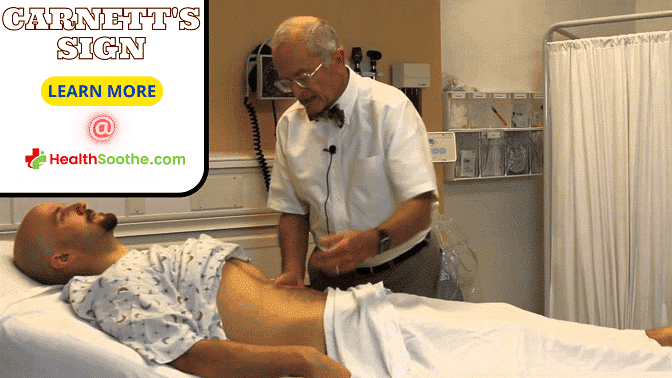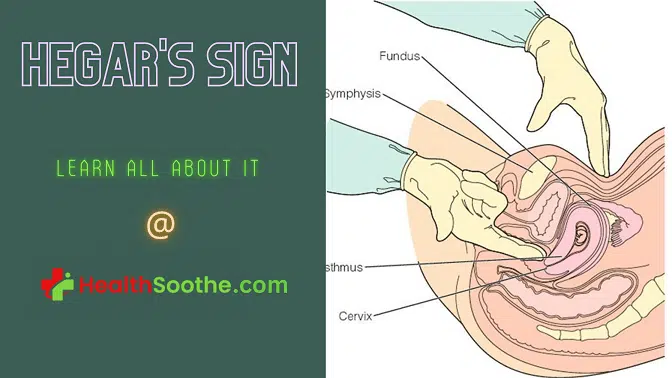Have you ever or currently had/having acute pains at the tip of your shoulders, especially when your legs are elevated or when you are lying down, and wondered what is going on, what is the cause of the pain, and whether your health is still optimal – whether you have anything to worry about, and whether the pain will go away?
Quick Facts About Kehr's Sign
| A | B |
|---|---|
| Description | Left shoulder pain caused by irritation of the diaphragm |
| First Described | By Hans Kehr, a German surgeon |
| Cause | Irritation to the diaphragm’s inferior surface due to bleeding from a splenic rupture or other irritants in the abdominal cavity |
| Other Potential Causes | Diaphragmatic or peridiaphragmatic lesions, renal calculi, ruptured ectopic pregnancy |
| Common Symptoms | Typically indicates splenic rupture, but right shoulder pain may signal liver or gallbladder irritation |
| Position | Pain is typically felt when lying down with legs elevated |
| Assessment Techniques | Position the patient in supine lying with the lower extremity elevated. Palpation of the left upper quadrant of the abdomen elicits pain in the left shoulder |
| Mechanism | Result of diaphragmatic irritation from blood or other irritants leaking into the peritoneal cavity after a spleen injury or rupture |
| Location | Left shoulder, radiating from the abdomen |
| Timing | Typically experienced immediately after the injury or rupture of the spleen |
| Prevalence | A study showed that 90% of patients with splenic ruptures presented with Kehr’s Sign |
| Other Conditions | Also observed in conditions involving blood or other irritants in the peritoneal cavity |
And so on, and so on, the questions keep piling in, and you start having doubts and fears, especially based on speculations and assumptions you have heard concerning pains like that.
Pains such as that are usually known as Kehr’s sign, and there's no need to panic because Healthsoothe is here for you as usual. Today’s article aims to explain all about that pain in your shoulder.
Kehr’s sign – Have you ever heard of it? This post will tell all the necessary details about what you need to know about kehr’s sign – what causes it, how to avoid it, its treatment, and much more.
So, what are you waiting for? Let’s roll.
What is Kehr’s Sign?

Kehr's sign is the presence of intense discomfort in the shoulder blades or shoulder tip, especially the left shoulder, due to the existence of blood and perhaps other irritants inside the peritoneal cavity when lying down with the legs raised.
Kehr's sign is a typical example of transferred pain: diaphragm irritation is communicated by a nerve (phrenic nerve) as discomfort above the collarbone.
This is due to the supraclavicular nerves deriving from the same cervical nerves as the phrenic nerves, C3 and C41Rastogi V, Singh D, Tekiner H, Ye F, Mazza JJ, Yale SH. Abdominal Physical Signs of Inspection and Medical Eponyms. Clin Med Res. 2019 Dec;17(3-4):115-126. doi: 10.3121/cmr.2019.1420. Epub 2019 Jul 15. PMID: 31308022; PMCID: PMC6886890..
The discovery is often ascribed to German gall bladder surgeon - Hans Kehr, however thorough examination of his life's work offers equivocal evidence as to whether he truly found it2Klimpel V (2004). "Does Kehr's sign derive from Hans Kehr? A critical commentary on its documentation?". Chirurg. 75 (1): 80–3. doi:10.1007/s00104-003-0796-2. PMID 14740133. S2CID 22705413..
What Causes this Kehr’s Sign?
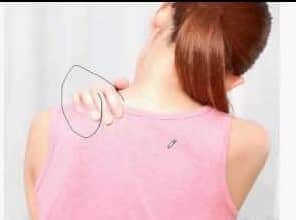
Kehr's sign inside the tip of the left shoulder is a characteristic indication of a spleen that is ruptured3https://www.physio-pedia.com/Ruptured_Spleen.
Peri-diaphragmatic or diaphragmatic lesions, renal calculi, splenic damage, or ruptured ectopic pregnancy may all cause this sign.
And while this sign is usually associated with spleen rupture, right shoulder discomfort is more commonly associated with liver or gallbladder inflammation.
So, if You Have Kehr’s Sign, What Does it Mean?
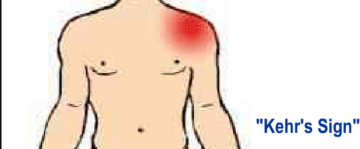
We have already established that the this sign inside the tip of the left shoulder is a characteristic indication of a spleen that is ruptured.
Peri-diaphragmatic or diaphragmatic lesions, renal calculi, splenic damage, or ruptured ectopic pregnancy may all cause this sign.
And while it is usually associated with spleen rupture, right shoulder discomfort is more commonly associated with liver or gallbladder inflammation.
So, if you have this sign, it might strongly suggest that you have one or more of the following:
- A ruptured spleen
- Diaphragmatic lesions
- Peri-diaphragmatic lesions
- Renal calculi
- Splenic damage
- Ruptured ectopic pregnancy
- Liver inflammation
- Gallbladder inflammation
How Do You Know If You Have Kehr’s Sign? – Technique for Testing for Kehr’s Sign
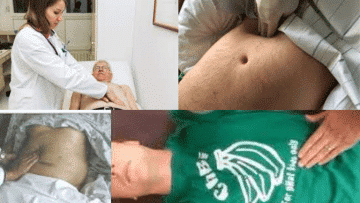
The person to be tested is placed in a supine posture with the lower extremity raised (Trendelenburg position).
Pain sensation in the left shoulder is elicited by mild examination of the left upper part or quadrant of the abdomen. If there is pain, then this is kehr’s sign.
What is the Treatment if You Have Kehr’s Sign?
If you observe any inclination or possibility of having this sign, consult your doctor immediately, and make sure to get a confirmation test, and if the sign is confirmed, then immediate treatment is recommended.
This sign is a referred pain that indicates or acts as a symptom of underlying bad health conditions like a ruptured spleen4Rutkow IM (June 1978). "Rupture of the spleen in infectious mononucleosis: a critical review". Arch Surg. 113 (6): 718–20. doi:10.1001/archsurg.1978.01370180060007. PMID 655846., diaphragmatic lesions, peri-diaphragmatic lesions, renal calculi, splenic damage, ruptured ectopic pregnancy, liver inflammation, and gallbladder inflammation.
So, if you have confirmed that you have kehr’s sign, you need to undergo diagnostic tests to find out which underlying health condition(s) the sign is indicating and start getting treatments for it.
A Word of Advice from Healthsoothe
It’s very recommended that when you have confirmed you have kehr’s sign, immediate treatment needs to be done, so that much damage that could be fatal will be prevented.
So, if you have any pain in your shoulders that persists above 3 days, especially at the tip of the left shoulder (left shoulder blade), go check it out at once whether it’s kehr’s sign, and if it is, start immediate treatment.
All right, guys, that is it for now for kehr’s sign. I hope Healthsoothe answered any questions you had concerning kehr’s sign.
Feel free to contact us at contact@healthsoothe.com if you have further questions to ask or if there’s anything you want to contribute or correct to this article. And don’t worry, Healthsoothe doesn’t bite.
And always remember that Healthsoothe is one of the best health sites out there that genuinely cares for you.
Additional resources and citations
- 1Rastogi V, Singh D, Tekiner H, Ye F, Mazza JJ, Yale SH. Abdominal Physical Signs of Inspection and Medical Eponyms. Clin Med Res. 2019 Dec;17(3-4):115-126. doi: 10.3121/cmr.2019.1420. Epub 2019 Jul 15. PMID: 31308022; PMCID: PMC6886890.
- 2Klimpel V (2004). "Does Kehr's sign derive from Hans Kehr? A critical commentary on its documentation?". Chirurg. 75 (1): 80–3. doi:10.1007/s00104-003-0796-2. PMID 14740133. S2CID 22705413.
- 3
- 4Rutkow IM (June 1978). "Rupture of the spleen in infectious mononucleosis: a critical review". Arch Surg. 113 (6): 718–20. doi:10.1001/archsurg.1978.01370180060007. PMID 655846.


